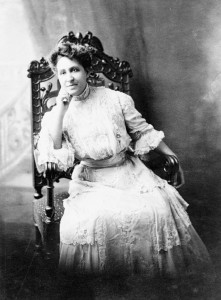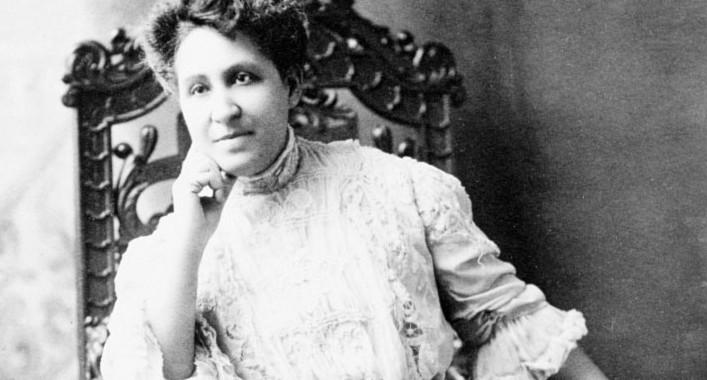
Internationally acclaimed educator, activist, and writer Mary Church Terrell visited Virginia Christian at the state penitentiary in Richmond on July 24, 1912. Earlier that day she had met with Governor William Hodges Mann, imploring him to commute the girl’s death sentence.
When the Eighth Biennial meeting of the National Association of Colored Women’s Clubs (NACWC) convened July 23, 1912, at the Hampton Normal and Industrial Institute, Virgie Christian, convicted of killing her white employer in a house nearby, was scheduled to die in the electric chair at the Richmond state penitentiary in ten days.
The convention’s first order of business was to elect Margaret James Washington, wife of Booker T. Washington, as president. Members then took up what many considered to be the most pressing matter facing the group—the fate of the sixteen-year-old African American girl huddled in a cell 66 miles away.
Mary Church Terrell moved to draw up a petition imploring the governor of Virginia to commute the girl’s sentence.
Born in Memphis, Tennessee, to former slaves, both of mixed race, Terrell majored in classics at Oberlin College and went on to earn a master’s degree. She taught school in Washington, D.C., and Wilberforce College in Ohio, then studied in Europe. She returned to education in the U.S. and became active in African American rights and women’s suffrage.
In 1896 she was elected the first president of the NACWC. In 1904 she spoke at the International Congress of Women in Berlin, Germany, the only black woman so honored, and received a loud ovation when she gave her remarks in German, then French, and finally, English. In 1909 she became one of the founding members of the National Association for the Advancement of Colored People (NAACP).
Mary Church Terrell’s motion was passed by the convention and a document was drawn. Petition in hand, she boarded the train to Richmond the following day to meet with William Hodges Mann, the last governor of Virginia to have served in the Confederacy.
Although the governor refused to commute Virginia Christian’s death sentence, he agreed to a two-week reprieve so private investigators hired by the NAACP could look for evidence that might absolve the girl.
With the governor’s blessing, Terrell then visited Virgie at the penitentiary.
That evening, no doubt exhausted by events, Mary Church Terrell returned to Hampton and reported to the women of the convention. Their petition had failed, but there was hope.
(For the actions of Mary Church Terrell on July 23-24, 1912, I’m indebted to Derryn Moten’s excellent work, “A Gruesome Warning to Black Girls: The August 16, 1912 Execution of Virginia Christian.”)
